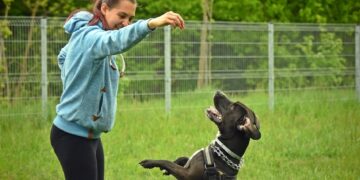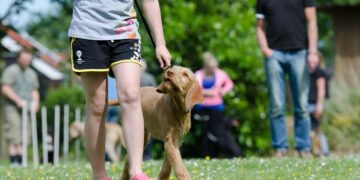Unleashing Potential: Harnessing the Power of Positive Dog Training
Dog training is an essential aspect of pet ownership, crucial for enhancing the bond between a dog and its owner and ensuring both can live together in harmony. Among the various methods available, positive dog training has gained significant traction due to its humane approach and effective results. This article delves deep into the world of positive reinforcement in dog training, exploring its benefits, techniques, and how to integrate these into your training regimen for a happy, well-behaved pet.
What is Positive Dog Training?
Positive dog training is a method that focuses on rewarding good behavior instead of punishing undesirable behavior. This technique leverages the theory that dogs will repeat good behavior when it results in positive outcomes. Key rewards used include treats, praise, and play, providing a motivation system that is both encouraging and ethical.
Benefits of Positive Reinforcement Training
Positive reinforcement not only fosters healthier learning environments but also nurtures the mental state of your dog. Here are several noteworthy benefits:
- Strengthens Bond: This method boosts the trust and bond between you and your dog because it is based on mutual respect and understanding, rather than fear or intimidation.
- Improves Communication: It helps owners communicate more clearly with their pets about what behaviors are correct, reducing frustration on both sides.
- Promotes a Positive Learning Environment: Dogs are more likely to learn and retain information taught in a supportive and positive setting.
- Adaptable: Effective across all breeds and ages, positive reinforcement can be customized to fit various training needs and goals.
Getting Started with Positive Dog Training
Initiating positive training techniques can be simple and enjoyable. Here are some guidelines to get you started:
Determine Motivators
Identify what your dog loves. This could be food, toys, or verbal praise. Use these motivators to reward desired behaviors, making the training enjoyable and engaging for your dog.
Set Clear Goals
Before beginning training sessions, define clear and attainable goals. Whether it’s improving leash behavior, mastering sit and stay, or eliminating indoor accidents, having specific targets will guide your training efforts effectively.
Consistency is Key
Consistency in commands, tone, and reward system helps your dog understand and follow through with learning. Always use the same command for a desired behavior to avoid confusion and ensure quick learning.
Common Techniques in Positive Dog Training
Clicker Training
Clicker training is a popular form of positive reinforcement. It involves using a sound—a click—to mark when your dog performs the correct behavior. Following the “click,” a reward is given, eventually making the sound itself a reinforcement tool.
Treat Training
Using treats as rewards for performing specific tasks or behaviors is a straightforward and effective method. Gradually, the treats can be replaced with verbal praise or petting as the dog begins to associate the behavior with positive outcomes inherently.
Addressing Behavior Problems Positively
When faced with behavior challenges, such as barking, jumping, or aggression, positive reinforcement can also be an effective strategy. Adjusting behavior through positive reinforcement involves rewarding your dog when they display behaviors that are alternative but desirable than the misbehavior. For instance, teaching your dog to sit quietly when visitors arrive instead of jumping on them.
Advanced Tips for Successful Positive Dog Training
- Be Patient: Learning can take time, and different dogs will progress at their own pace. Celebrate small wins and remain patient and consistent.
- Avoid Negative Reinforcements: Even accidental negative reactions like raised voice tones or body language can set back your training. Focus on cultivating a positive atmosphere always.
- Keep Sessions Short: Dogs, especially puppies, have short attention spans. Keep training sessions brief yet productive, ideally around 10 to 15 minutes, to maximize concentration and effectiveness.
- Engage in Regular Practice: Regular practice helps reinforce learning. Try to incorporate training into your daily routine to help your dog assimilate the behaviors faster.
Conclusion
Positive dog training is an empowering technique that not only enhances behavioral compliance but also fosters an enriching relationship between you and your dog. By harnessing the principles of positive reinforcement, you can effectively teach and manage your dog’s behavior, ensuring a happy, disciplined, and responsive pet. Remember, the key to successful dog training lies in understanding and patience, and with these, you can truly unleash your dog’s potential.
Start your journey in positive dog training today and witness the transformation in your canine friend’s behavior and your overall relationship!














































